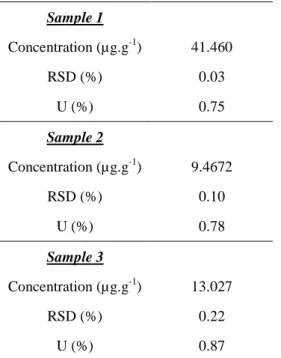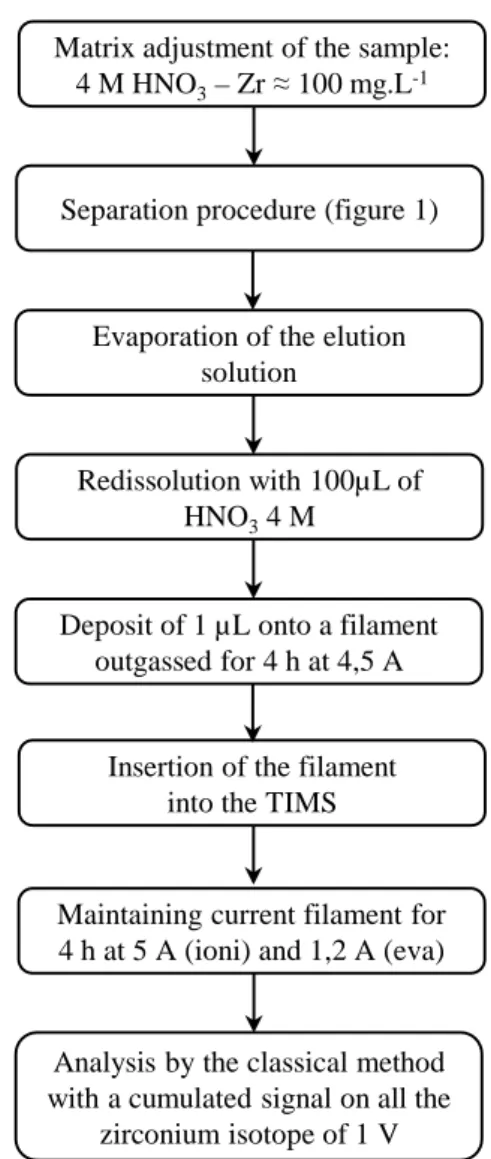Determination of zirconium isotope composition and concentration for nuclear sample analysis using Thermal Ionization Mass Spectrometry
Texte intégral
Figure



Documents relatifs
ber of participants were receiving anti-retroviral (ARV) therapy because, in contrast with the current situation in this community, ARVs were not widely available during the course
Ainsi, la démarche d’écriture incitée est-elle plutôt programmatique (Lumbroso, 2010). Cependant, la révision ayant été faite au fil de l’écriture, puisque la
The objective of this paper is to highlight through a numerical experiment the impact of the test plan design defined here by the number of the products to be
functionalization, b) methods for indirect specific function- alization, and c) methods for specific functionalization via cofactors/ligands (Fig. It should be noted that the
collect information from the instructors about RQ3a (What are the instructors’ goals regarding measurement and uncertainty teaching?) and RQ3b (How do instructors
The total carbon content of Set B sample, measured by carbon analysis was found to be related to a C/Zr =1.02 ± 0.01, by applying post NMR correction and subtracting the amount of
Figure 1 : Evolution of the energy distribution of fission products (A=90, Q=18) during 62 hours Figure 2: RBS spectra obtained on a Zr foil (t=0) and after 2 thermal annealing
In Egypt, the Constitution of September 11 th , 1971 marks a break, in the sense that it introduces, for the first time, a reference to the normativity of